Zhijin cave
Zhijin cave
Zhijin Cave, located in Guanzhai Miao Township, Zhijin County, Guizhou Province, is located on the South Bank of Liuchong River, one of the sources of Wujiang River, 120 kilometers away from Guiyang, the provincial capital. Geographical coordinates are 26 38 31 26 52 35 N, 105 44 42 106 11 38. The Park covers an area of 170 km2 and an elevation of 900 - 1670 M.
In April 1980, the cave was discovered by a tourist resources survey team organized by the Zhijin County People's Government. Zhijin Cave is now a National Geopark, National Natural Heritage, National AAAA Tourist Scenic Area and World Geopark. Zhijin Cave has been rated as the top six most beautiful tourist caves in China and the top ten most beautiful tourist attractions in China.
National Geographic Research Departments such as National Geography of China under the jurisdiction of the Chinese Academy of Sciences have also given high praise, calling it the "King of China's Caves", "Huangshan returns without looking at the mountains, and there is no cave outside Zhijin Cave!" On September 19, 2015 (17 p.m. Japanese time), Zhijindong National Geopark was officially approved by UNESCO to join the World Geopark. It fills the gap that Guizhou has no world geological park. It became the first World Geological Park in Guizhou Province.
Historical evolution
In April 1980, the cave was discovered by a tourist resources survey team organized by the Zhijin County People's Government.
In 1988, it was awarded the title of "National Scenic Spot".
In 1991, it was selected by the National Tourism Administration as one of the 40 best tourist attractions in China.
In 1994, Zhijin Cave was the only representative of Asia to join the International Cave Tourism Association.
In January 2004, Zhijindong successfully declared and obtained the qualification of National Geopark.
On October 23, 2005, China topped the list of "China's Most Beautiful Tourism Caves" in the National Geographic "Beauty China" contest.
On January 8, 2006, Zhijindong National Geopark officially opened its monument.
In 2006, it was approved as China's National Natural heritage.
In 2008, it was approved as a national AAAA tourist attraction.
In September 2013, it was named one of the most American National Geoparks in China.
On January 15, 2014, China was awarded the candidacy to declare the World Geopark to UNESCO in 2015.
On September 19, 2015 (17 p.m. Japanese time), Zhijindong National Geopark was officially approved by UNESCO to join the World Geopark. It fills the gap that Guizhou has no world geological park. It became the first World Geological Park in Guizhou Province.
geographical environment
geographical position
Zhijin Cave, formerly known as Daji Cave, is located in Guanzhai Township, 23 kilometers northeast of Zhijin County, Guizhou Province, 120 kilometers away from Guiyang. Located in Bijie City, western Guizhou Province, most of the two counties across Zhijin and Qianxi are located in Zhijin County, 22 kilometers away from Zhijin County and 78 kilometers away from Qianxi County. Geographical coordinates range from 105 degrees 44'42 to 106 degrees 11'38 in the East and 26 degrees 38'31 to 26 degrees 52'35 in the north. The total area of the park is 170 square kilometers and the elevation is 900-1670 meters.
topographic features
Zhijin Cave is a multi-level and multi-type karst cave with a length of 6.6 kilometers and a width of 175 meters. The relative height difference is more than 150 meters. The total volume of the cave is 5 million cubic meters. The space is wide. There are three layers of upper, middle and lower layers. There are more than 40 deposits of stalagmites, pillars, stalagmites and bell flags in the cave, which form various karst landscapes. The tunnels are crisscrossed and the rocky peaks are scattered all over the place, with staggered running water, intermittent ponds and underground lakes. It is known as "karst gem" and "karst cave wonder". More than 40 kinds of karst deposits show some main types of karst caves. Zhijin cave is the essence of the scenic spot. It is a treasure house of huge size and peculiar shape in China. The depth of the cave is more than 10 kilometers. The width of the two walls is 173 meters and the maximum is 50 meters.
Zhijin Cave has been rated as the top six most beautiful tourist caves in China, and the top ten most beautiful strange caves in China, the most beautiful tourist attraction in China. National Geographic Research Departments such as National Geography of China under the jurisdiction of the Chinese Academy of Sciences have also given high praise, calling it the "King of China's Karst Caves", "Huangshan returns without looking at the mountains, and there is no cave outside Zhijin Cave"
Zhijin Cave is a large-scale, multiform and colorful cave, which is a prominent feature of the landscape of Zhijin Cave. The length of the cave is 12.1 kilometers and the relative height difference is 150 kilometers.
It has a width of 175 meters and a height of 60 meters to 100 meters. It covers a total area of more than 700,000 square meters. The average height of the deposits is about 40 meters and the highest is 70 meters. It covers more than 40 types of deposits in caves all over the world. It shows a dry climate and infinite scenery.
The magnificent "underground tower forest", the vague "iron mountain mist", the endless "silent mountains", the huge "hundred-foot curtain" and the deep.
Austrian "Guanghan Palace", mysterious "Lingxiao Dian", bold and upright "Yinyushu", delicate "curly stone", lifelike "Puxian riding elephant" and "deep love between mother-in-law and daughter-in-law"... Big picture scrolls and small scenes are shocking and amazing. According to the experts'investigation and comparison, the size, shape, category and landscape effect of Zhijin Cave are more magnificent, complete and beautiful than those of France and Yugoslavia, which are world-renowned caves.
The magnificent karst landscapes set off the Zhijin Cave with great momentum. In the area of about 5 square kilometers around Zhijin Cave, there are typical ring basins, natural bridges, skylight valleys, volcanic currents and canyons, which have high ornamental value and scientific research value. They are called "the world's first-class karst landscape" by William, an internationally renowned geomorphologist.
Causes of formation
Zhijin Cave is a subtropical humid monsoon climate region, located in the southern bank of the Jianghe Gorge in the upper reaches of Wujiang River, China. It is a high-level dry cave formed by neotectonic movement, uplift of blocks and cutting of dissolution rock mass under rivers. The geological formation lasted for about 500,000 years, from the late Early Pleistocene to the Middle-Late Pleistocene. Because of the complex and changeable geological structure, the cave has the characteristics of multi-pattern, multi-stage and multi-type development.
Main attractions
Survey of scenic spots
According to different landscape and characteristics, Zhijin Cave is divided into welcoming hall, lecture hall, Xuexiang Palace, Shouxing Palace, Guanghan Palace, Lingxiao Palace, 100,000 mountains, Talin Cave, Golden Rat Palace, Wangshan Lake, Waterfront Zeguo and other scenic spots, with 47 halls and more than 150 scenic spots. The largest cave has an area of more than 30,000 square meters. Inside the cave, there are all kinds of strange-shaped pillars, mantles, stone flowers and so on, which make up a unique landscape, such as entering the fantastic world of mythology.
Travel Tips
1. People walk slowly in the cave, but they still feel overwhelmed. The 6.6 kilometer ornamental journey takes about two hours.
。
2. It is not forbidden to take photos in the cave, but we should pay attention to avoid touching the roadside sedimentary rocks in order to get a good view. They are very fragile.
3. As tourists bring carbon dioxide into the cave, many beautiful and transparent stalactites have turned yellow, so please pay more attention not to smoke.
4. The air in the cave is cooler and the humidity is heavier. Tourists should wear long clothes and trousers to keep warm. The road is slippery. Be careful about wrestling.
5. Tourist teams can be met in caves, but they can be mixed in. Otherwise, one person prone to fear wandering in huge caves.
Transport line
Before 2012, Zhijin Cave had been "raised in a boudoir's ignorance", the main reason is the serious traffic jam, facing the eighteen bends of the mountain road, many foreign visitors can not stand it, carsickness is serious, and have to give up the journey.
However, the Guizhou-Zhijin Expressway (Qianxi-Zhijin) opened in 2012 has changed this situation. And from January 26, 2013, Guiyang Railway Station will open a special train from Guiyang to Zhijin "Zhijin Cave", with K9475, K9476, K9477 and K9478, respectively. At that time, it will take only two and a half hours to arrive at Zhijindong Scenic Area of National Geopark from Guiyang. According to reports, the departure time of the train from Guiyang is 8:47 a.m. and 15:12 p.m. and the fastest arrival time is 2 hours and 38 minutes through Anshun. Visitors to Zhijin Cave can take a special train departing from Guiyang in the morning. After visiting the scenic spot of Zhijin Cave, they can return by night train at 18:29. After the special train was opened, the scenic spots of Guiyang, Anshun Huangguoshu and Zhijindong were closely linked and became the classic route for Guiyang citizens to visit on weekends 2 or 1. Travel to Zhijin Cave can also be from Anshun, about 100 kilometers, about two hours by car.
Surrounding attractions
Outside the cave are natural landscapes such as surface karst, canyons, streams, waterfalls and villages of Buyi, Miao and Yi nationalities. The whole scenic spot covers an area of 450 square kilometers. Besides Zhijin Cave scenic spot, there are Zhijin Ancient City, Naked River Canyon and Hongjiadu scenic spot. Zhijin Ancient City was built in 1382 AD, surrounded by mountains on three sides and water running through the city. There are 71 springs in the city, more than 50 temples in nunneries and temples, and there are peculiar temples of wealth and gods and Baoan temples combined with caves and temples.
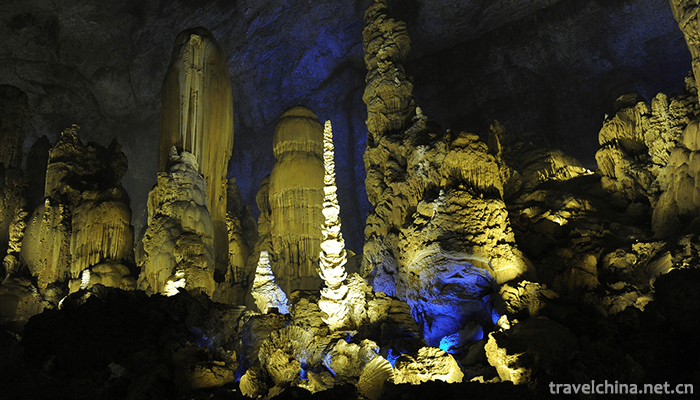
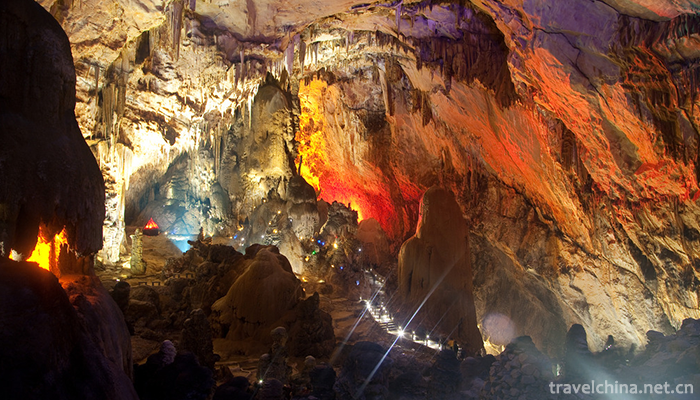

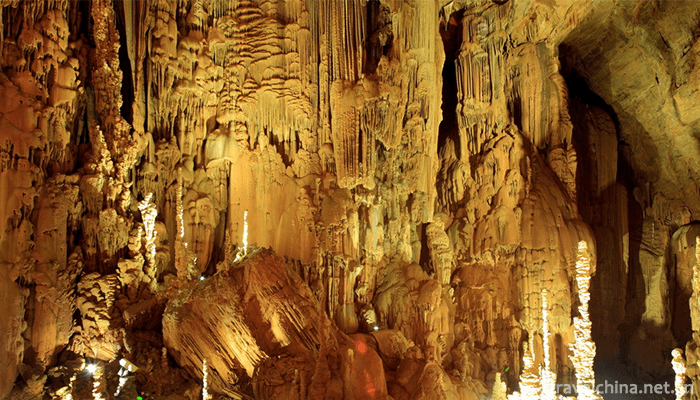
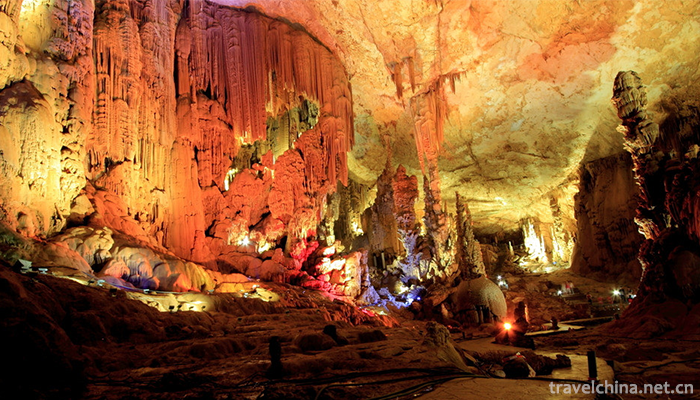
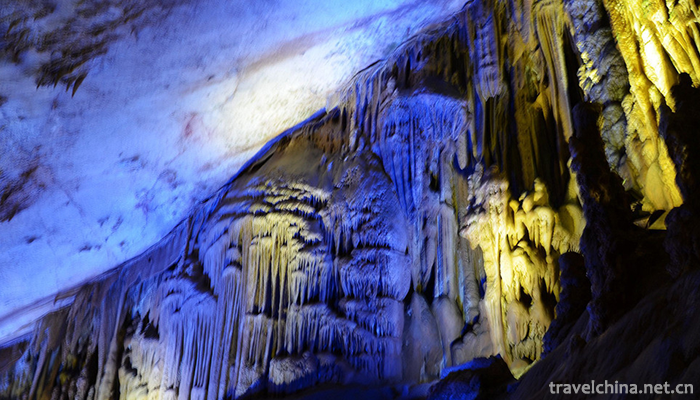
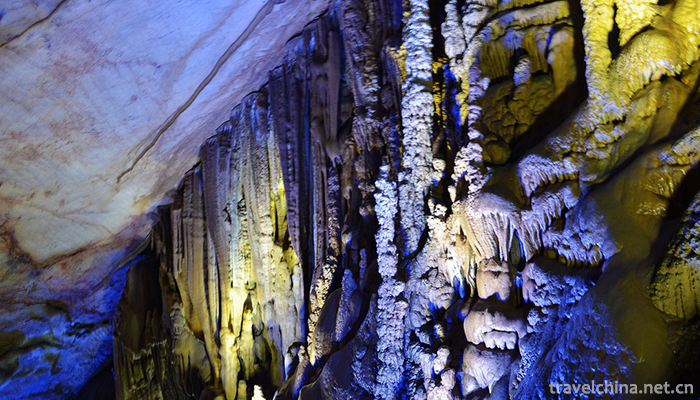
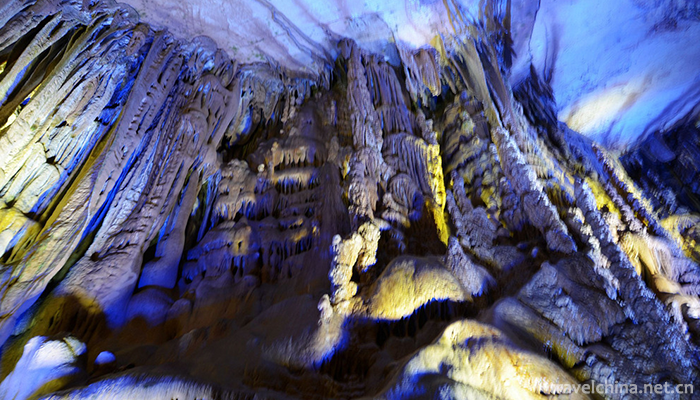
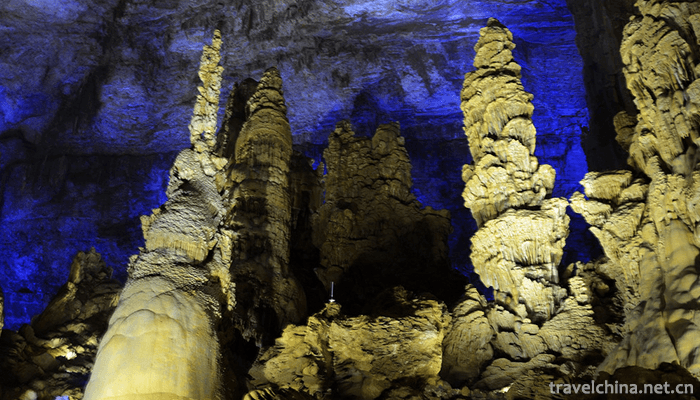
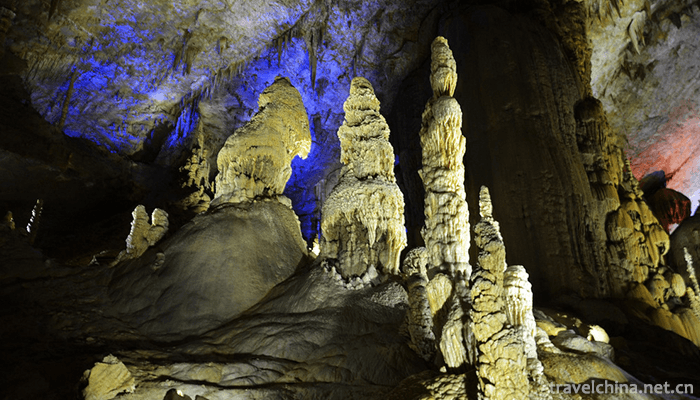
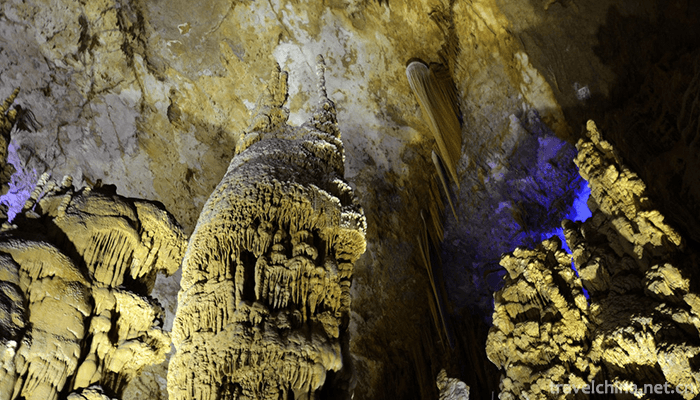

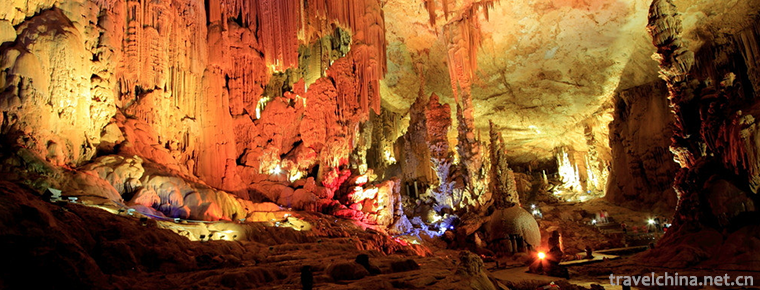
-
1.Eastern Royal Tombs of the Qing Dynasty
Eastern Royal Tombs of the Qing Dynasty is located 30 kilometers northwest of Zunhua City, Tangshan City, Hebei Province. It is 125 kilometers west of Beijing City and covers an area of 80 square kil
Time 2018-11-24 -
2.Liupanshan National Forest Park
Liupanshan National Forest Park is located in the center of the triangle formed by Xi'an, Yinchuan and Lanzhou. It is located in the south of Ningxia. It spans two counties and one district in Jingyua
Time 2018-12-24 -
3.Linhe Yellow River National Wetland Park Inner Mongolia
Inner Mongolia Linhe Yellow River National Wetland Park is located in Linhe District, Bayannaoer City, Inner Mongolia Autonomous Region, with a total area of 4637.6 hectares. The functional zoning map
Time 2018-12-26 -
4.Three Mausoleum of Shengjing
The three mausoleums outside Guanzhou refer to the Fuling Tombs of Nuerhachi, the Taizong Emperor of the Qing Dynasty, and the Zhaoling Tombs of the Taizong
Time 2019-02-08 -
5.Yicheng Temple Scenic Spot of Sun Bin Tourist City
Sun Bin Tourist City is located in Jishan Town, 20 kilometers northeast of Juancheng County, Heze City, Shandong Province. Juancheng is the hometown of Sun Bin, a famous
Time 2019-02-13 -
6.Tone tune
Colour tune, commonly known as tune, colour tune, colour lantern, Na Hao Hey and so on, is one of the local operas in Guangxi. It belongs to the system of Lantern opera
Time 2019-04-04 -
7.Gulunmu Festival of Oroqen Nationality
The Oroqen ethnic group is one of the minorities with a small population in China. Since ancient times, it has multiplied and lived in the deep forest of Heilongjiang Valley and Xing'an Mountains
Time 2019-04-28 -
8.Multi voice Folk Songs of Hani Nationality
Hani multi-voice folk songs are popular in several Hani villages in the eastern part of Azahe Township, Honghe County, with Puchun Village as the center. Their natural environment is closed and traffi
Time 2019-05-02 -
9.Mounting and repairing techniques
The mounting and repairing technique of ancient Chinese characters and paintings is a kind of traditional Chinese handicraft. It is used for restoration and restoration of ancient calligraphy and pain
Time 2019-08-10 -
10.Firing Techniques of Zibo Ceramics
During the Wei, Jin, Southern and Northern Dynasties, Zibo began to produce porcelain. During the Tang and Song Dynasties, the technology of making porcelain was constantly improving. During the Ming
Time 2019-08-16 -
11.Guo Shoujing
Guo Shoujing (1231 - 13 16). Xingzhou Xingtai county (now) Hebei Province Xingtai City People. Yuan Dynasty Famous astronomers, mathematicians, experts in Hydraulic Engineering Early teacher Liu Bin Z
Time 2019-09-07 -
12.Beijing University of Chinese Medicine
Beijing University of Traditional Chinese Medicine is a national key university with traditional Chinese medicine as its main subject. It is directly under the management of the Ministry of Education.
Time 2019-09-22